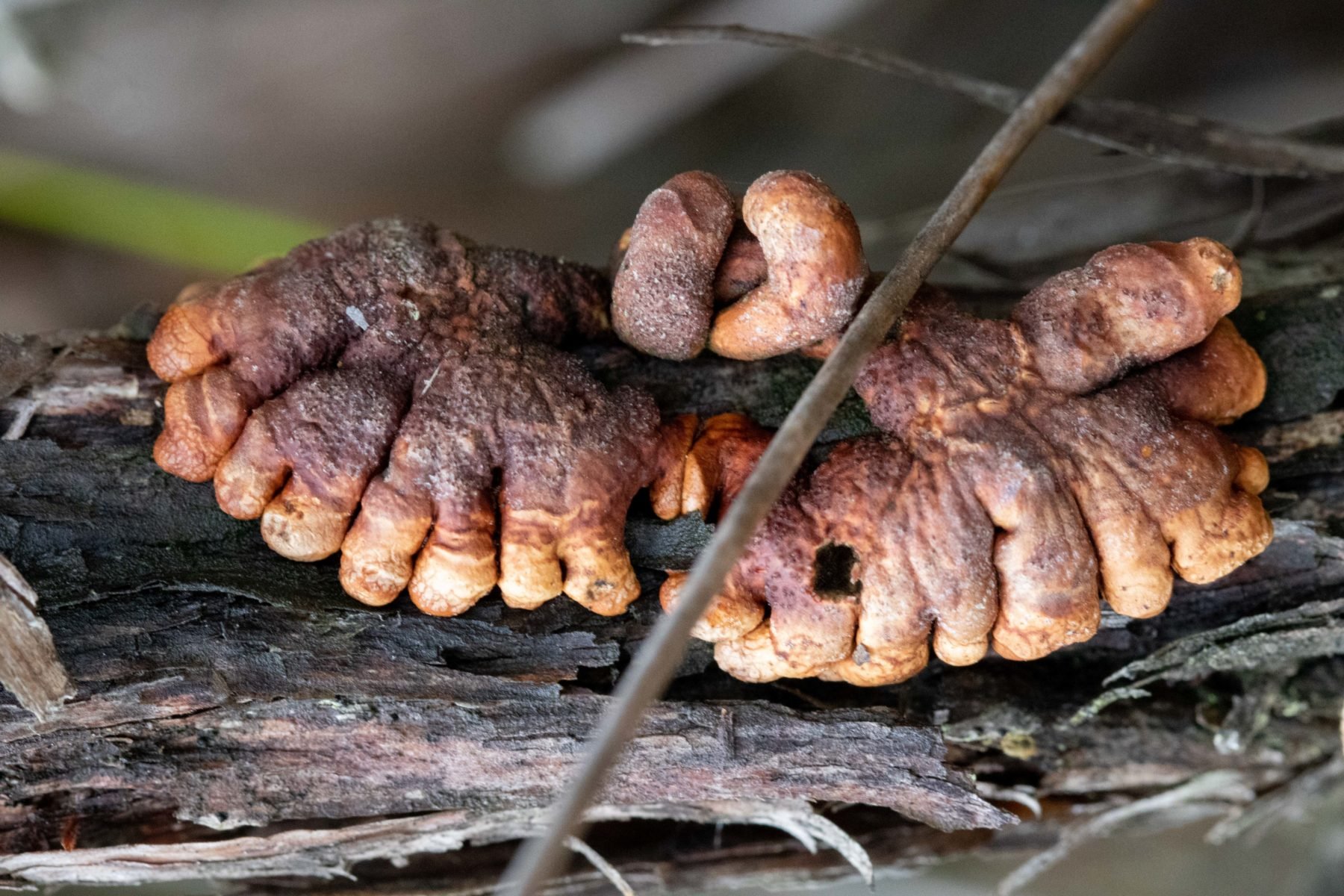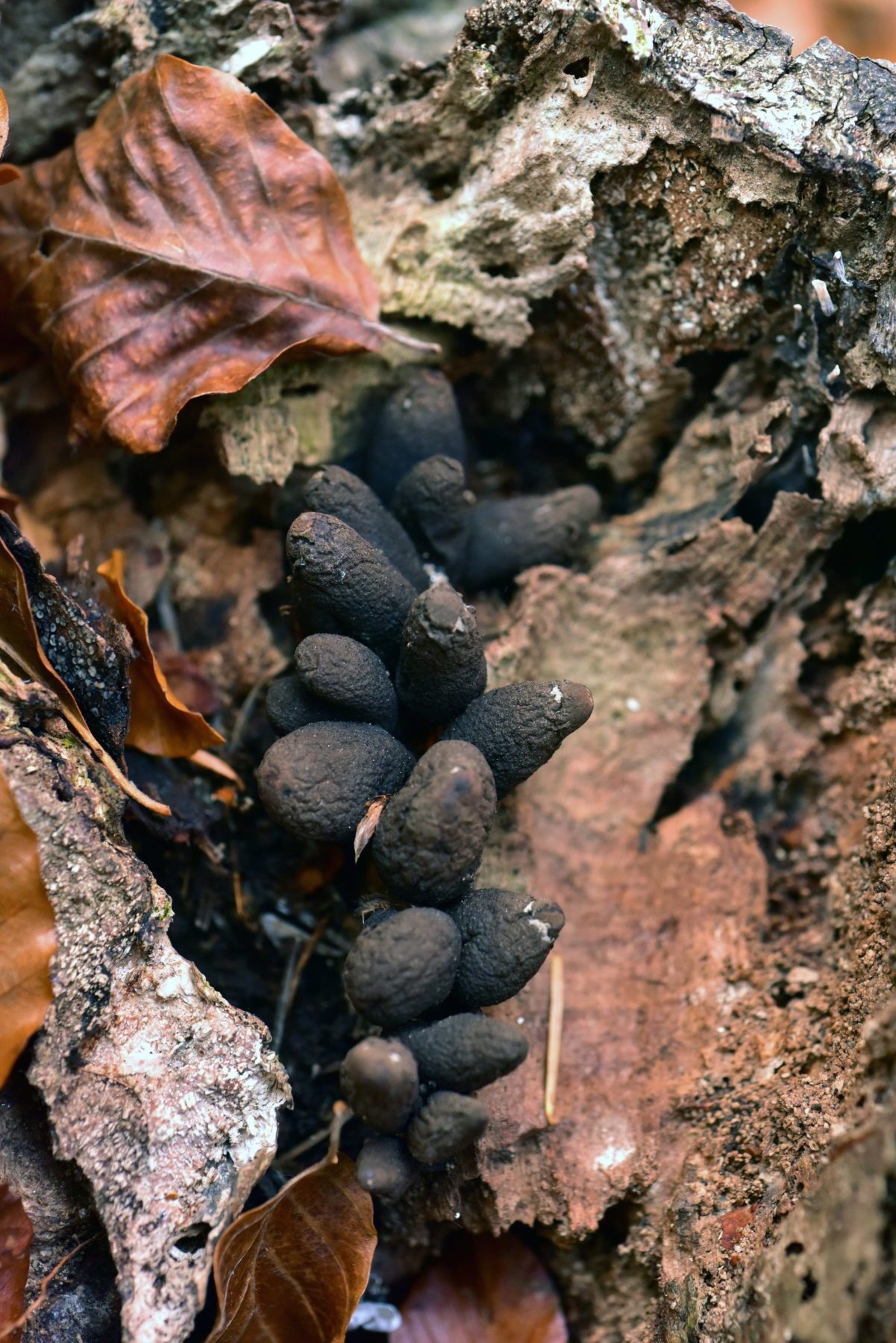Bizarre mushrooms give Australian forests an otherworldly vibe

Bec Crew
Bec Crew

We usually feature strange and beautiful animals on this blog, but we couldn’t pass up the opportunity to gush over some of the world’s weirdest mushrooms. With their odd shapes, resembling all kinds of human appendages, these fungi look like fodder for a witch’s cauldron.
The fungi pictured above are commonly known as jelly ears or wood ears (Auricularia auricula-judae). Members of the ‘jelly fungus’ order Auriculariales, these translucent, reddish brown mushrooms are found in forests around the world. In Australia, jelly ears proliferate in eucalyptus woodland and rainforests all along the east coast, attaching themselves to dead or living wood, leeching the nutrients out in order to survive.
As much as these mushrooms look like forbidden snacks, they are actually perfectly edible (if a little tough and bland, apparently). They are particularly popular in China, where they are brewed in a soup as a treatment for cold and fever.
Of course, it’s never a good idea to eat a mushroom you’ve found in the wild without expert supervision, especially as you might have encountered one of the jelly ear’s lookalikes, such as the tripe fungus (Auricularia mesenterica) or the Pacific cloud ear (Auricularia cornea), found mostly along the northern and eastern coasts of Australia. Fortunately, these fungi are not considered inedible because they’re poisonous, they’re considered inedible because they have no discernible taste.
Another fungus that happens to resemble a disembodied human body part is the tea-tree fingers mushroom (Hypocreopsis amplectens). Thought to be one of Australia’s rarest fungi, this strange species has the appearance of fat human fingers, gripping onto wooden substrate on the forest floor.

This critically endangered species grows in low-density populations in small pockets of Australia, and is at risk of extinction from bushfires and habitat mismanagement and destruction.
Until recently, it was thought that the only remaining populations of tea-tree fingers were in three small sites along the eastern coast of Western Port Bay in southern Victoria and one at Launching Place, a town about 54 km east of Melbourne’s CBD, where fewer than 20 individual mushrooms were recorded.
But some good news came in June 2021, when scientists and volunteers from Royal Botanic Gardens Victoria discovered an additional population of tea-tree fingers on French Island, in Western Port, just off the Mornington Peninsula. This newly discovered population also happens to be the largest known population of these unique fungi.
“Critically, this is the only existing tea-tree Fingers population within a protected National Park,” Dr Michael Amor said at the time of the discovery. “Three out of four mainland sites have uncertain futures as they are adjacent to sand mines.”
If jelly ears and tea-tree fingers aren’t enough to give you the heebie-jeebies, how about dead man’s finger fungi? This dark (in hue and vibe) species, Xylaria polymorpha, grows in upright, elongated shapes, poking up out of the forest floor in rather eerie fashion:

This species does not grow in Australia, however, so you’ll need to visit the deciduous forests of North America and Europe in order to spot them.
To learn more about fungi, and their importance to all other forms of life on Earth, check out this explainer by mushroom experts Michael Lim and Yun Shu.





